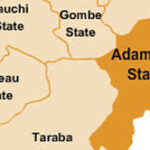The House of Representatives on Tuesday asked the federal government to complete the Dasin Hausa Dan project in Adamawa to address the recurring flooding in Nigeria caused by the release of excess water from the Lagdo Dam in Cameroon.
This followed the adoption of a motion of urgent national importance by Rep Minority Leader, Kingsley Chinda.
Rep. Chinda, in his submission, expressed concern over the severe annual flooding experienced by states along the Benue River and other affected regions.
He noted that the Lagdo Dam, built in 1982 for irrigation and power generation, releases water every rainy season to prevent overflow.
- Kano gov urges Fulani residents to uphold peaceful coexistence
- Parents of detained #EndBadGovernance protesters demand justice at Kano Assembly
Chinda further highlighted the stalled Dasin Hausa Dam project in Adamawa State, which he said, was initially agreed upon between Nigeria and Cameroon to serve as a buffer for the excess water.
“This critical project has been delayed for years due to bureaucratic bottlenecks and funding challenges,” he said.
Chinda said the release of excess water from Lagdo Dam had caused widespread flooding across several Nigerian states, including Borno, Adamawa, Benue, Taraba and Kogi.
“This flooding has led to repeated loss of lives, displacement of communities, and destruction of farmlands, livestock and infrastructure, such as roads, bridges and schools,” Chinda lamented.
He said despite early warnings issued by Nigerian authorities, many communities remain ill-prepared, leaving them vulnerable to the floods’ devastating impact.
The House, while adopting the motion, mandated the Nigerian-Cameroon Friendship Group to investigate the bilateral agreement on the Lagdo Dam and the mitigation efforts in place, with a two-week deadline to submit recommendations for legislative action.
The House also tasked the Federal Ministry of Water Resources and the Ministry of Works to expedite action on the dam’s construction and rehabilitating critical infrastructure in flood-prone areas.

 Join Daily Trust WhatsApp Community For Quick Access To News and Happenings Around You.
Join Daily Trust WhatsApp Community For Quick Access To News and Happenings Around You.


